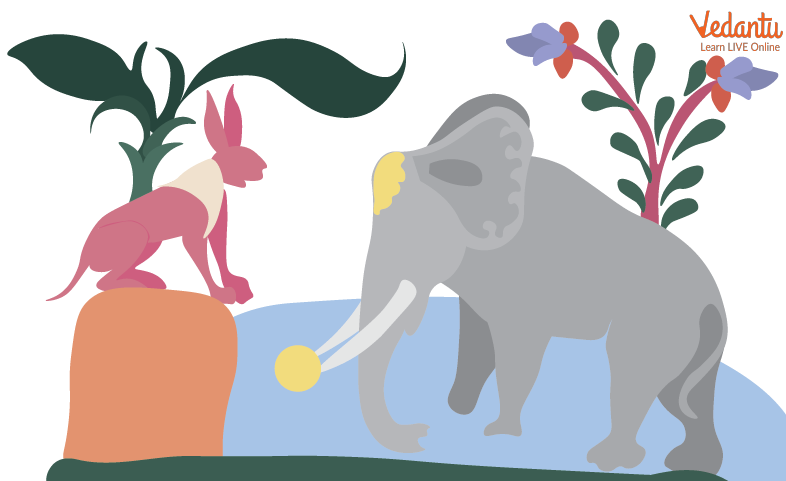Panchatantra Stories and Its Meaning

What are Panchatantra Stories?
We all have different ideas in mind when we hear the word "Panchatantra". Some people think of tales, while some of the venerable folklore. The Panchatantra is an ancient Indian collection of stories or fables. A fable is a made-up narrative with characters drawn from nature, such as animals, plants, and other living things. It usually has a moral at its conclusion. For instance, the fable known as "The Hare and the Tortoise" has as its lesson that "slow and steady wins the race". The author of this fable is Aesop.

Panchatantra
The Panchatantra was composed more than 2000 years ago, yet because of the moral principles and wisdom it contains, it is still well-known and relevant among today’s kids. It was originally composed in Sanskrit, but it is now available in many different languages worldwide. There are 87 stories in the Panchatantra, and each one contains a moral lesson. It is a fantastic tool for comprehending the moral ideals of human existence. Through these tales, one can learn about psychology and moral values. Thus, the Panchatantra occupies a significant position in Sanskrit literature.
Panchatantra Meaning
The Panchatantra is a collection of Indian animal stories widely read in its native land and beyond. One version of the text was made to the West as early as the 11th century and was known in Europe as The Fables of Bidpai (after the narrator, an Indian sage named Bidpai, called Vidyapati in Sanskrit).

Meaning of Panchatantra
The Panchatantra is, in theory, meant to be a manual of niti ("policy," especially for kings and statesmen); the aphorisms frequently extol cunning and sagacity rather than altruism.
The Panchatantra is credited to a wise man named Bidpai, which is likely a Sanskrit word meaning "court scholar," in an Arabic translation from around 750 AD, even though the name of the original author or compiler is unknown.
By translations from Persian and Arabic, oral folklore, and other means, the fables of the Panchatantra made their way to Europe. They had a big impact on mediaeval tale writers.
The stories are contained within one of the five frame stories of the original book, which is composed of Sanskrit prose and verse stanzas. The stories are credited to a scholarly Brahmin named Vishnusharman, who used them to train the three dimwitted sons of a king. The introduction serves as an enclosing framework for the entire work.
The Panchatantra's Five Principles
A collection of stories from ancient India called the Panchatantra was first composed in Sanskrit. It is attributed to Vishnu Sharma and is divided into five portions, each focusing on a different theme.

Principles of Panchatantra
One of the most enduring genres of folk writing is the fable, which is a beloved component of folklore. Nearly every nation has a unique collection of fables that have played a significant role in its literary history.
The Panchatantra's Five Sections

Five Sections of Panchatantra
“Mitra-bheda: The Separation of Friends (The Lion and the Bull)”
“Mitra-labha or Mitra-samprapti: Gaining Friends (The Dove, Crow, Mouse, Tortoise, and Deer)”
War and Peace's "Kakolookiyam: Of Crows and Owls"
Loss Of Gains (The Monkey and the Crocodile)
"Apariksitakarakam: Irresponsible Behaviour/Rash Behaviour" (The Brahman and the Mongoose)
These five tenets (or five books) are a collection of parables about animals. In the above-mentioned order, each fable is woven into another following fable.
Summary
To teach some ideals in life, the Panchatantra was primarily written. The Panchatantra was created in King Amarshakti's realm. He designated Vishnu Sharma as his three sons' teacher. The Fables of Bidpai was the title by which the work was referred to throughout Europe.
1. Why is India's Panchatantra so significant? What are its five tenets?


FAQs on Panchatantra Stories and Its Meaning
1. Why is India's Panchatantra so significant? What are its five tenets?
The Panchatantra represents significant fables about animal customs. According to Indian legend, Vishnu Sharma wrote the Panchatantra and submitted it as a Niti sastra. Sastra is regarded as a treatise on political science and ethical behaviour, and niti is essential to "the judicious conduct of life."
The Panchatantra is a collection of Indian animal stories. Therefore, "Mitra Bheda" (Loss of Friends), "Mitra Laabha" (Gaining Friends), "Suhrud Bheda" (Causing Discord Between Friends), "Vigraha" (Separation," and "Sandhi") are the five principles or practices that are portrayed by the Panchatantra (Union).
2. How good is Panchatantra? How did it originate?
One of the best collections of stories for young kids is the Panchatantra, which is still relevant today. Sanskrit prose and poems make up the original Panchatantra literature. Each story is based on one of the five Panchatantra principles.
The Panchatantra is a collection of folktales and fables that is thought to have been authored in Sanskrit more than 2500 years ago by the illustrious Hindu Scholar Pandit Vishnu Sharma. Despite the fact that all of the characters are from the animal kingdom, it provides insight into human behaviour.




